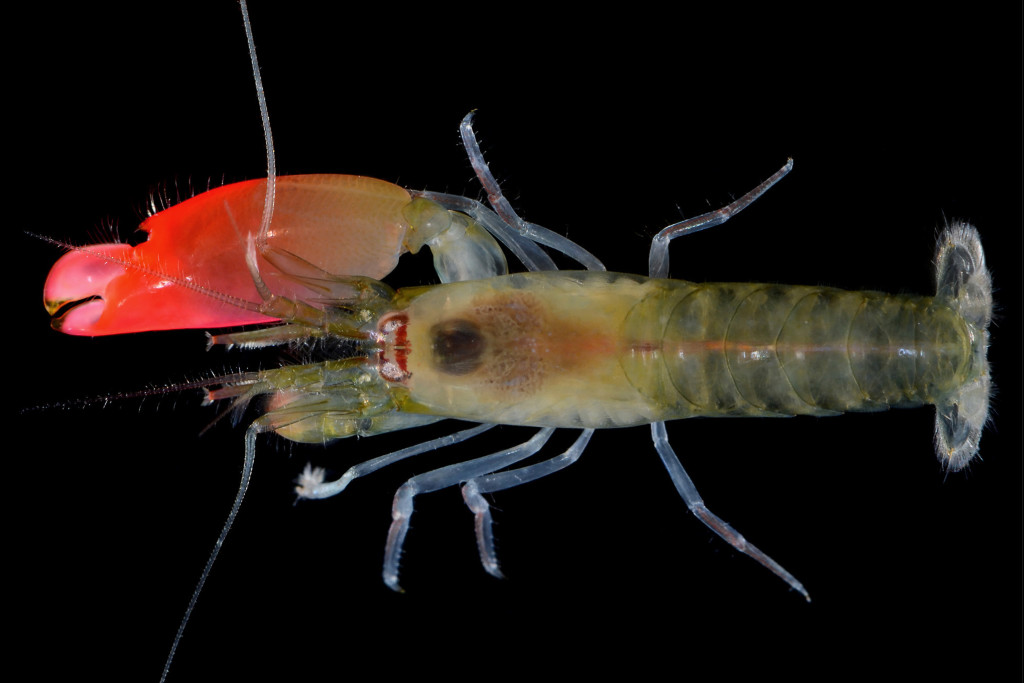A Pink Floyd fan found the best way to honor his favorite band — by naming a newly-discovered species of shrimp after them.
Dr. Sammy de Grave, a zoologist from Oxford University’s Museum of Natural History and a solid Pink Floyd fan since childhood, gave the name Synalpheus pinkfloydi to a pistol shrimp discovered on the Pacific coast of Panama. It has a unique pink snapping claw used to stun prey with sonic energy. Here’s what it looks like:

The S. pinkfloydi has the ability to produce a deafeningly loud noise, as should be expected from a species named after a legendary rock band. The sound is produced when the shrimp snaps its large pink claw at rapid speed, forming a high-pressure cavitation bubble which creates one of the loudest sounds in the ocean when it collapses.
According to the Oxford team, the sonic blast created by S. pinkfloydi can reach up to 210 decibels (that’s far louder than the sound of gunshot, which can only reach 140-190!). The blast is so powerful that it can kill small fish nearby.
In an interview with NPR, Dr. de Grave explained that the shrimp was named after the band because of its pink claw rather than its deafening sonic blast:
“The story is when Pink Floyd first went to America, people thought one of the band members was actually named Pink. A reporter asked, ‘Which one of you is pink?’ so that’s what stuck in our mind and that’s where [the name] came from.”

This actually makes more sense. Although Pink Floyd’s music is undeniably loud, there are other, louder bands that would’ve made better name inspirations for a creature capable of producing deadly and ear-splitting sounds — but we’re not going to argue the point further because who the hell doesn’t like Pink Floyd, right? The team even commissioned Pink Floyd album cover mash-ups featuring their new discovery, because why not? Take a look:

